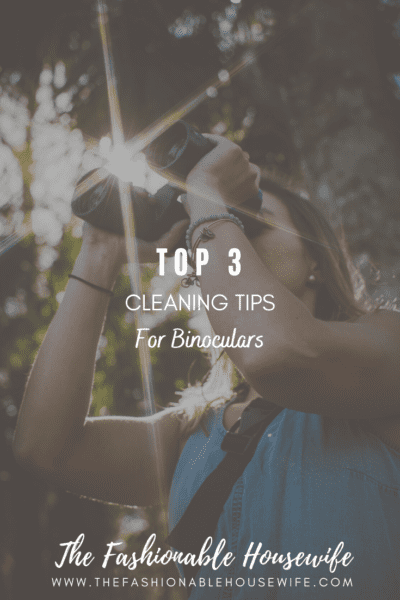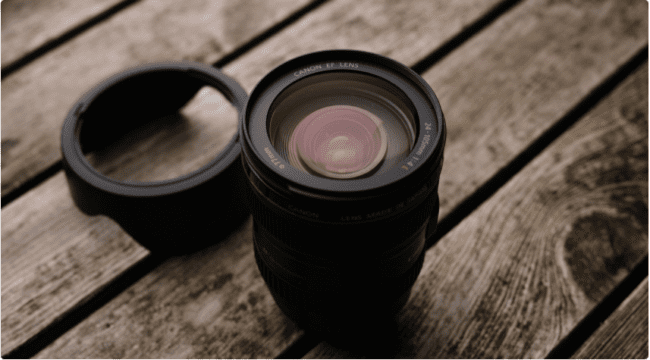
Damaged lenses on a binocular can spoil the fun of a birding trip. Not to mention some can cost a fortune.
And it’s easy to get the whole cleaning process wrong, like wiping off dust with your “clean” napkin.
Good thing is, it’s not so hard to stop the habit.
I’ll guide you through how you can maintain your binoculars to ensure they stay in top condition.
But first, how about we go over ways not to clean a pair of binoculars.
The “Wrong” Way To Clean Binoculars
The most common is the breathe-and-rub method. Using the breathe-and-rub method is a huge disservice to your binoculars. Almost every birder has been guilty of this at some point.
Also, when your binoculars get dusty; particularly the lens, your first instinct would be to wipe it off with the closest “clean” fabric, right? On the surface, this might seem okay, but it’s not the best action to take.
Why?
Well, the primary ingredient of dust is silica – tiny rocks. Silica is harder than glass. When you rub the dust across the lens of your binoculars with any kind of cloth, it causes scratches on the thin coating of your lens.
These scratches are small individually, but they scatter light. In other words, your binocular would end up showing cloudy images down the line.
So, avoid cleaning your binocular with just any type of fabric, especially when it’s dusty. This is less important if you bought binoculars as a gift for a child as they generally have fairly robust lenses.
How Often Should I Clean My Binoculars?
OK, so here’s a bit of an irony to the topic. The catch to cleaning your binoculars is to not do it often. Mid-range to high-quality binocular lenses are coated with a thin layer of material to allow for greater transmission of light through the lens.
You want to preserve the coating, and incessant cleaning wouldn’t cut it. Even if you’re obsessed with cleaning things after each use, this is counterproductive for your binoculars.
Your binoculars come with a cover for the lenses. Manufacturers call this “rain guard”. When not in use, cover the lenses with the rain guard to protect it from dust. This will reduce the number of times you have to clean your binoculars.

So, clean your binoculars as infrequently as possible. Only clean when it’s totally necessary.
3 Useful Tips for Cleaning Your Binoculars
Below are tips that would help you keep your binoculars in great shape and last for long.
- Read The Manual
Many of us have a bad habit of ignoring instruction manuals when we buy a new product. Some even dispose of it as soon as they unbox their eyepiece.
A user manual will give instructions on how to use the binoculars. It’s fair to reason that the manual would also contain ways of managing it including cleaning.
You’ve spent a lot of money purchasing your binoculars, you wouldn’t want it to become a wasted investment because you used the wrong cleaning products or wrong cleaning method.
Before cleaning, read the brief user manual. It will help you manage your binoculars better.
- Clean The Lens
Some tools would prove useful in cleaning your binoculars – lens pen, microfiber cloth, and cleaning solution.
Most quality binoculars usually come with a cleaning kit that contains these tools. You can always find a pair for your budget.
A dusty lens is the most common reason binoculars are cleaned. Dust is the enemy of lenses as it can scratch the precious coatings. Using the tools mentioned above would help.
When cleaning your binocular lens, the first thing to do is use the lens pen to brush off dust. The pen has a brush that is soft and won’t damage the coatings of the lens. It would help to hold the binocular upside down so the dust falls away.
After cleaning with the brush, use a microfiber cloth to clean the lens. The microfiber cloth is designed to clean lenses as it is soft and less likely to cause lasting damage to your lens.
You can use the microfiber cloth in conjunction with a cleaning solution also made to clean optics. Spray the cleaning solution on the microfiber cloth and use the cloth to gently wipe the lens to remove grime on the lens.
You can also use the microfiber cloth (dry) to clean the body of the binocular.
PS: Never spray the cleaning solution directly on the lenses. It could damage the seals around the lens assembly.
- Seek Expert Advice
Cleaning the lens and body of your binoculars at regular intervals would keep your binoculars in good condition for a long time.
Don’t try to open the binoculars to clean the interiors as this could damage it. Dismantling binoculars can ruin the optical alignment and void manufacturer’s warranty.
If you must clean the insides of your binoculars, seek professional help for this.
What To Avoid
When your binoculars get smudged or dirty, do not clean with these following items:
- Clothes
- Handkerchiefs
- Toilet paper or paper towel
- Household cleaners
- Dish soap and detergent
- Canned/Compressed air blowers
- Ammonia
All the clothes and paper products would scratch the lens coating. Ammonia will dissolve the coating.
Wrapping Up
Whether you’re a bird watcher or a general nature enthusiast, learning how to properly clean your binoculars would ensure it lasts longer and your viewing experience after 2 years remains the same as the first day you purchased it.
The above tips would help to keep your binoculars clean without damaging the lens.
Funny enough, folks say more binoculars are damaged from improper cleaning than dropping them.
What’s your take? Ever damaged a pair of binocs from cleaning?



